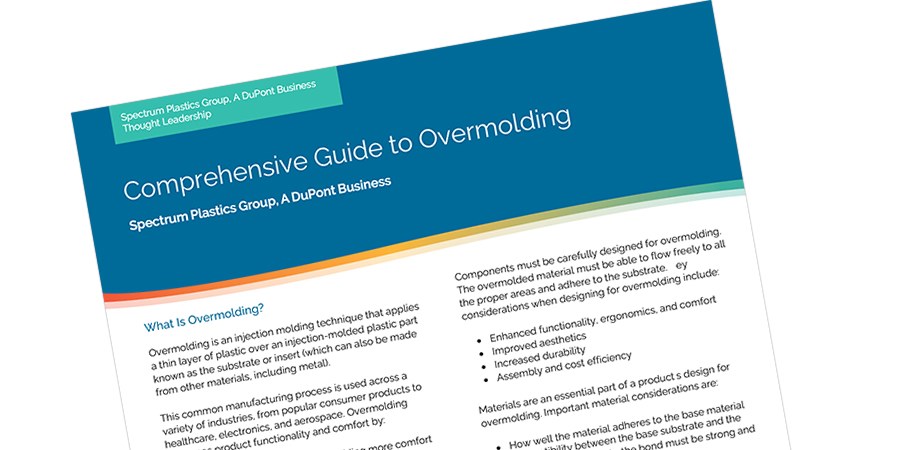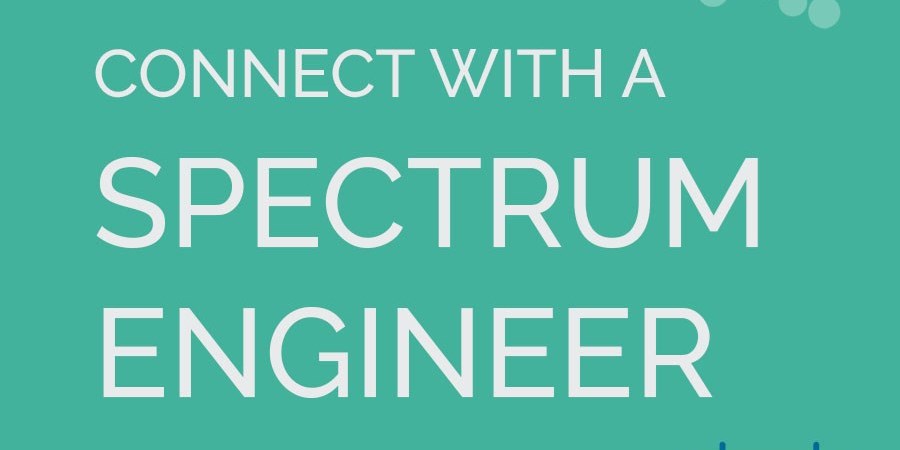Comprehensive Guide to Overmolding

Comprehensive Guide to Overmolding

Click here to download the thought leadership.
This in-depth guide to overmolding covers design best practices, material selection, and more. Improve your design and manufacturing process with expert tips.
Overmolding is an injection molding technique that applies a thin layer of plastic over an injection-molded plastic part known as the substrate or insert (which can also be made from other materials, including metal).
This common manufacturing process is used across a variety of industries, from popular consumer products to healthcare, electronics, and aerospace. Overmolding enhances product functionality and comfort by:
Overmolding techniques offer numerous advantages in product design and manufacturing, such as enhanced functionality, improved aesthetics, increased durability, and improved user experience. By leveraging the benefits of overmolding, manufacturers can create innovative and competitive products that meet market demands and the expectations of the end-users.
Components must be carefully designed for overmolding. The overmolded material must be able to flow freely to all the proper areas and adhere to the substrate. Key considerations when designing for overmolding include:
Materials are an essential part of a product’s design for overmolding. Important material considerations are:
It is recommended to consult with material suppliers, engineers, and experts in the field to assist in the material selection process. Their guidance, recommendations, and expertise will help identify the most suitable materials for overmolding, based on the specific product and performance requirements.
Overmolding typically involves the bonding of two or more materials together, where the overmolding material remelts to and merges with the base component. This bonding provides enhanced strength, improved aesthetics, and functional benefits. Common materials used in overmolding are:
These are just a few of the wide range of materials available for overmolding. Many other options are available, depending on the specific requirements of the product, including desired flexibility, hardness, chemical resistance, and appearance. SPG design teams work with our material suppliers to select the most appropriate materials for overmolding based on the desired properties and performance criteria for the product.
Overmolding can be soft or hard. Soft overmolding involves applying a soft or flexible material, such as TPE or silicone, onto a rigid base or substrate. The soft material is injected or molded over the base component, encapsulating or enveloping it. Soft overmolding is often used to provide grip, cushioning, or comfort in products like handles, grips, or wearable devices. Hard overmolding is the opposite of soft overmolding, where a rigid material is molded over a soft or flexible base. This technique is often used to provide structural support, reinforcement, or a protective outer layer for softer or more delicate core components.
There are three main types of overmolding:
Insert molding
Insert molding involves placing a pre-formed insert, such as a metal component or a previously molded part, into the mold cavity and then injecting the overmolding material around it in a single shot. The overmolded material bonds with the insert, encapsulating or surrounding it. Insert molding is often used to add strength, functionality, or specific features to the base component.
Two-shot molding
Two-shot molding, also known as multi-shot or dual-shot molding, involves injecting two or more materials in separate shots into the same mold cavity to create a single part. The first material is injected to form the base or substrate, and then the mold is indexed or rotated to introduce the second material for the overmolded layer. Two-shot molding allows for the combination of materials, colors, or textures in a single part, often achieving complex designs or functionality.
Overmolding with co-injection
Co-injection overmolding is similar to two-shot molding but typically involves injecting two materials simultaneously into the mold, rather than in sequence. The two materials are combined in the mold cavity, with one material acting as the base or substrate, and the other material forming the overmolded layer. Co-injection offers advantages such as improved bond strength and enhanced control over material distribution.
Two-shot molding and insert molding are both used in manufacturing to combine multiple materials in a single part, but there are key differences between the two processes. Below is a comparison of two-shot and insert molding capabilities:
Insert molding
Precise positioning and fixation of the inserts in the mold are required to ensure proper molding material encapsulation. The molding material encapsulates or surrounds the insert, which is then mechanically or chemically bonded to the molding material, forming a cohesive part. The bond strength between the insert and the molding material varies depending on the design and material compatibility. Compared to two-shot molding, insert molding is more limited in terms of design flexibility, as it requires the use of pre-formed inserts, which can restrict design possibilities.
Two-shot molding
Two-shot molding offers greater design flexibility compared to insert molding. Designers can create complex shapes, add soft-touch features, incorporate multiple colors or textures, and achieve seamless integration between materials. Two-shot molding allows for the creation of more ergonomic designs and improved aesthetics. However, it is more expensive because it typically requires specialized molds with additional features, such as multiple injection points or moving mold components, to achieve proper material flow and adhesion.
Both insert molding and two-shot molding require careful planning and consideration of material compatibility, process parameters, and tooling design. Deciding which is the best process for your project depends on the design complexity, materials, bond strength, manufacturing processes, and production speed. For example:
By considering these essential design factors, manufacturers and designers can make an informed decision about whether two-shot molding or insert molding is the more suitable process for their specific product requirements. It is helpful to consult with experts in the field and conduct feasibility studies or prototypes to assess the viability and performance of each technique before proceeding with production.
Designing products for two-shot and insert molding requires careful consideration of all engineering factors to ensure successful and efficient manufacturing processes. Collaborating with mold designers, material experts, and manufacturers during design for manufacturability is essential for optimizing the use of overmolding to create a high-quality, durable part using the most cost-effective methods.
We’re happy to help with your projects in any way we can. Contact us and we’ll email you back the information you’re looking for, or we’ll schedule a call to discuss with you in more detail.

